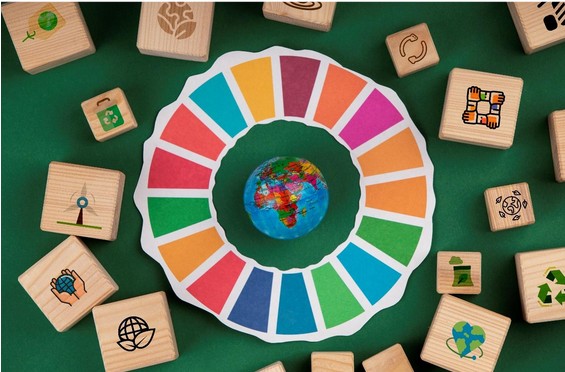The Earth Charter and the Sustainable Development Goals (SDGs) are important milestones in the global quest for social and environmental justice. Although different, these documents share fundamental values and complement each other in building a more harmonious future.
The Earth Charter and the Sustainable Development Goals (SDGs) are foundational documents that guide humanity towards a more just and equitable world. Both were conceived in different contexts, but with the same vision of promoting ethical values and practical action to address global challenges.
History of the Earth Charter
The Earth Charter was launched in 2000 after a process of global collaboration involving thousands of people from different cultures and backgrounds. The initiative began in 1987 when the United Nations World Commission on Environment and Development recognised the need for a document to promote global responsibility and interdependence. The Charter was designed to inspire and guide individuals, organisations and governments to adopt ethical principles to build a more just, peaceful and ecologically sound society. On this basis, the Earth Charter presents a holistic vision of the world and proposes a new way of thinking and acting. Its 16 principles are organised around four main pillars: respect and care for the community of life; ecological integrity; social and economic justice; and democracy, non-violence and peace.
History of the SDGs
The Sustainable Development Goals (SDGs) were adopted by the United Nations General Assembly in 2015 as part of the 2030 Agenda for Sustainable Development. The 17 Sustainable Development Goals (SDGs) replace the Millennium Development Goals (MDGs) and aim to end poverty, protect the planet and ensure that all people enjoy peace and prosperity by 2030. They are the result of an inclusive and participatory process involving governments, civil society, the private sector and other stakeholders. The goals are broad and interdependent, but each has its own list of targets to be achieved. Achievement of the 169 targets would indicate achievement of the 17 goals.
Similarities and differences between the Earth Charter and the SDGs
There are similarities and differences between the two documents, such as
· Vision and purpose: Both documents share a vision of a world in which peace, justice and human dignity are central. The Earth Charter provides an ethical and philosophical basis, while the SDGs provide concrete and measurable targets to achieve this vision.
· Structure: The Earth Charter is divided into four pillars: respect and care for the community of life; ecological integrity; social and economic justice; and democracy, non-violence and peace. The SDGs are made up of 17 specific goals covering a wide range of social, economic and environmental issues.
· Scope: While the Earth Charter is a document that proposes a new way of living in society based on a change in mentality, the SDGs are more specific and focus on practical outcomes aimed at more responsible development. The SDGs include detailed targets and indicators to track progress over time.
How the Earth Charter and the SDGs complement each other
A closer analysis of these two documents reveals that the Earth Charter and the SDGs are not in competition, but rather complementary. The 16 principles of the Earth Charter offer a hopeful vision and a call to action. The 17 SDGs, on the other hand, are more pragmatic, as they include goals related to the reassessment of current production patterns, the equitable distribution of resources and the protection of biodiversity. It can therefore be concluded that the Earth Charter provides an ethical and philosophical foundation, detailing the social values and principles that can guide the implementation and achievement of the SDGs. For example, the Earth Charter’s principles of respect for life and ecological integrity reinforce the SDG targets related to environmental protection (SDGs 13, 14 and 15). Similarly, the Earth Charter’s pillars of social and economic justice and democracy align with goals such as poverty eradication (SDG 1), gender equality (SDG 5) and the promotion of just and inclusive institutions (SDG 16).
Everyone’s role in achieving the SDGs
To achieve the desired impact, it is crucial that governments, organisations and individuals use both documents as complementary guides. Adopting the ethical principles of the Earth Charter can strengthen the implementation of the SDGs by promoting a more holistic and interconnected approach. Education, public awareness and community engagement are essential to integrate these values at all levels.
Complementary Activities
- Video: The Sustainable Development Goals and the Earth Charter International
- Article on the Earth Charter as the Foundation for the SDGs
- Documentary: Learning by Nature



